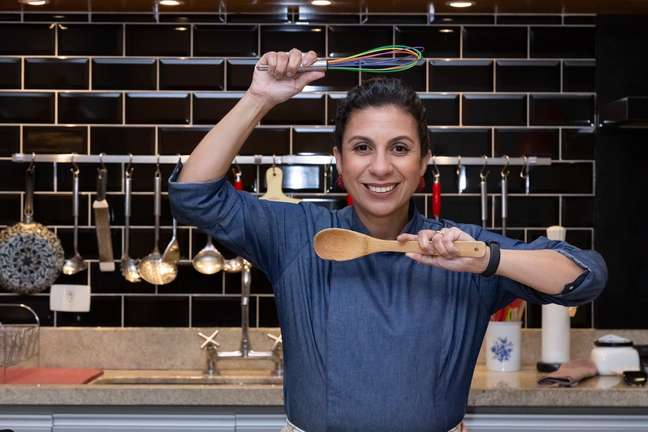My story with infant feeding is similar to that of a baby at the beginning of the introduction of food. I tasted two tablespoons, I found it different, I activated my senses and over time I was completely involved.
After 12 years of working with Pediatric Oncology, I completely changed my area and went to study how to develop a good relationship with food. Yes, because it is common to hear about eating difficulties, binges and various other “changes” and how to correct them. However, few talk about how to make it all work!

All we need is for the child to develop a natural and enjoyable relationship with food, and for this there are valuable behavioral tips that every parent really needs to know before starting the introduction of food!
I share it with you here,
10 behavioral tips for a successful food introduction
1. Take care of your food during pregnancy and breastfeeding, as the flavors of food pass through the amniotic fluid and breast milk, affecting the baby’s taste even before birth
Two. Wait for signs of readiness to begin introduction, usually from the 6th month of life. The more prepared the child, the greater the success.
3. The best way to start is the one with which the child develops best, so don’t make premeditated choices, experiment.
4. In fact, make this moment an opportunity to expose the child to different flavors, textures, smells and temperatures.
5. Leave the child free to collect food, play and get dirty. Sensory experiences speak volumes about the relationship she will have with food.
6. At mealtimes, be aware of the act of eating. Note your child and his or her impressions of what he is receiving. No hurry!
7. Avoid distractions such as televisions, tablets, cell phones, or toys. This practice will get in the way in the future.
8. Introduce elements of “comfort food” into the menu, those foods that “embrace” each other and tell family stories. Eating is pure family culture
9. Respect the child’s satiety and do not force feeding under any circumstances. Trust your baby!
10. Eliminate the weight of the child who has to eat everything on the plate … Just have fun !! Up to 1 year, breast milk is still the main meal!
Read these tips carefully and get ready for one of the essential moments to create good eating habits. Starting well says a lot about the future.
We need to talk more about this preventive pediatrics.
Count me in!
See you next month!

Renata Aniceto (@ dra.renataaniceto) is a pediatrician and mother of two teenagers: Laura 17, Lucas 14 and a pet: Thor 2. Child nutrition specialist and has one foot in the kitchen. Conduct culinary experiences where you cook and teach culinary medicine and best food choices for everyday life! She is also a Down syndrome specialist. Andwrites about infant nutrition in BabyHome, in the column There is a pediatrician in the kitchenevery month.
And more:
+The best content in your email for free. Choose your favorite Earth Newsletter. Click here!
Source: Terra
Benjamin Smith is a fashion journalist and author at Gossipify, known for his coverage of the latest fashion trends and industry insights. He writes about clothing, shoes, accessories, and runway shows, providing in-depth analysis and unique perspectives. He’s respected for his ability to spot emerging designers and trends, and for providing practical fashion advice to readers.




![New Day ahead: What awaits you on Tuesday, July 15, July 12, in 12 episodes of 2025 [SPOILERS] New Day ahead: What awaits you on Tuesday, July 15, July 12, in 12 episodes of 2025 [SPOILERS]](https://fr.web.img5.acsta.net/img/79/43/79435021c0bfb8e27ed7d08131107424.jpg)


